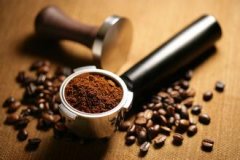How do you grade coffee beans? Basic knowledge of boutique coffee beans

At present, there is no international standard for coffee bean quality classification, and the classification method varies from country to country, so coffee classification is carried out according to some characteristics applicable to each producing country. Take samples of coffee beans from a bag, judge them according to the standards of the producing country, rate these samples, and determine whether they are good or bad according to the evaluation. The characteristics of most coffee grades are: appearance (size, uniformity, color of beans); the number of missing beans in the sample; the quality of the cup, including taste and mellowness; and the degree of roasting of coffee beans. The classification and terminology vary from country to country, so the standard of coffee quality is only related to the type of coffee produced in that country, and it is difficult to understand the true quality of coffee if you are not familiar with a country's original classification criteria. But at least there is a fixed and unified reference between each country: the size of coffee beans is determined by a standardized sieve, so buyers do not have to look at the size of coffee beans from the producer's point of view.
A coffee bean may have a special place name, or be treated (washed or unwashed), or it may have a title, or just a letter or number after it. In some countries where the coffee industry is nationalised, the grading system seems uninteresting. In Kenya, for example, a bag of coffee might be: water-washed AA, followed by a number to indicate the quality level of the cup. However, it is this ordinary-sounding coffee that most experts agree is one of the best in the world.
Most Caribbean and Central American countries express quality in terms of altitude. For example, the eastern part of Costa Rica produces LGA (Low Grown Atlantic Atlantic low altitude), MGA (Medium Grown Atlantic Mid-Atlantic altitude) and HGA (High Grown Atlantic Atlantic High altitude); West Bank slopes produce HB (Hard Bean hard beans), MHB (Medium Hard Bean Intermediate hard beans), GHB (Good Hard Bean excellent hard beans) and SHB (Strictly Hard Bean very hard beans). Beans are hard, and the higher the altitude, the higher the price. Costa Rica's best plantations mark their bags and elevations, and like Nicaragua, Costa Rica uses the name of the region with the flavor of the country. Guatemala's elevation is relatively vague, from 700 to 1700 meters above sea level: "Good Washed" (good water washed beans), "Extra Prime Washed" (super water washed beans), "Semi Hard Bean (SH)" semi-hard beans, "Hard Bean (HB)" hard beans, "Fancy Hard Bean" super hard beans and "Stictly Hard Bean (SHB)" very hard beans.
Important Notice :
前街咖啡 FrontStreet Coffee has moved to new addredd:
FrontStreet Coffee Address: 315,Donghua East Road,GuangZhou
Tel:020 38364473
- Prev

The mild taste bud test of Bourbon Santos
Speaking of which, Bourbon Santos is not as bold and expressive as Brazilians, it is mild, sour and lively, and has a refreshing and harmonious flavor, it is one of the most popular coffee in the world. Among the Brazilian coffee, only Sandoz coffee is the most valued by the world. Although people all over the world love coffee, no other country combines coffee with daily life like Brazil.
- Next

The secret of grinding coffee beans The secret of grinding coffee beans
The grinding tool for coffee beans is a bean grinder. The bean grinder can be divided into three types: ● Manual rotary bean grinder for home use. (Suitable for demand)
Related
- Guji coffee producing area of Guji, Ethiopia: Humbela, Shakiso, Wulaga
- What is the most expensive variety of Qiloso in BOP multi-variety group?
- How to store the coffee beans bought home?
- Why are Yemeni coffee beans so rare now?
- Ethiopian Sidamo all Red Fruit Sun Sun Santa Vini Coffee beans
- SOE is mostly sour? What does it mean? Is it a single bean? what's the difference between it and Italian blending?
- Is Italian coffee beans suitable for making hand-brewed coffee?
- How to choose coffee beans when making cold coffee? What kind of coffee beans are suitable for making cold coffee?
- Just entered the pit to make coffee, what kind of coffee beans should be chosen?
- Can only Japan buy real Blue Mountain Coffee? What are authentic Jamaican Blue Mountain coffee beans?

